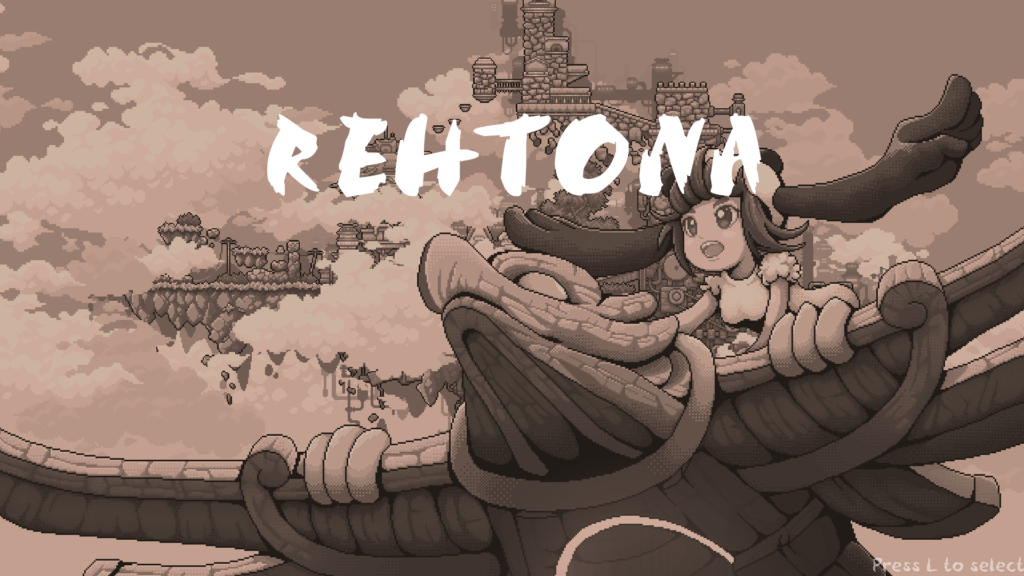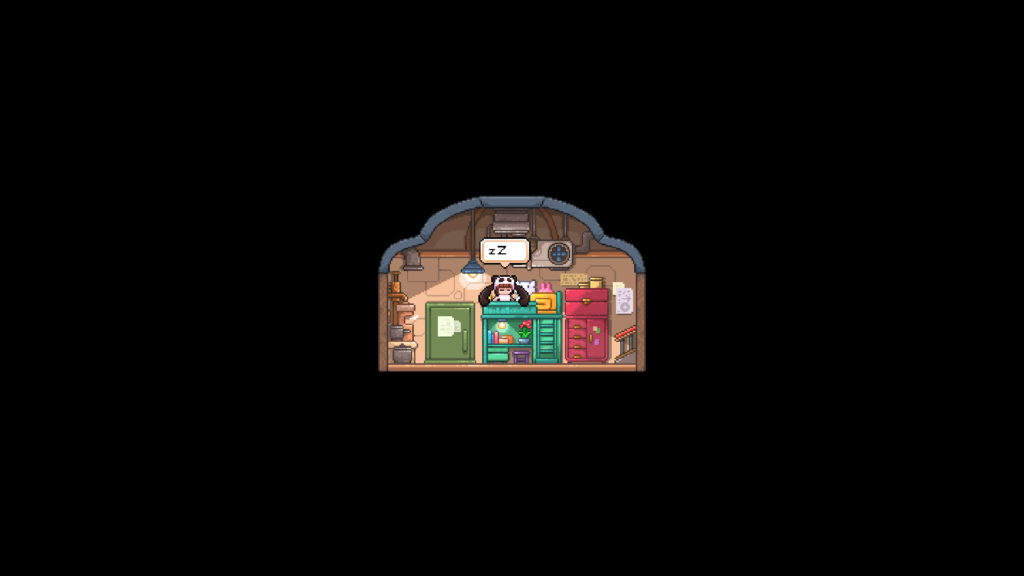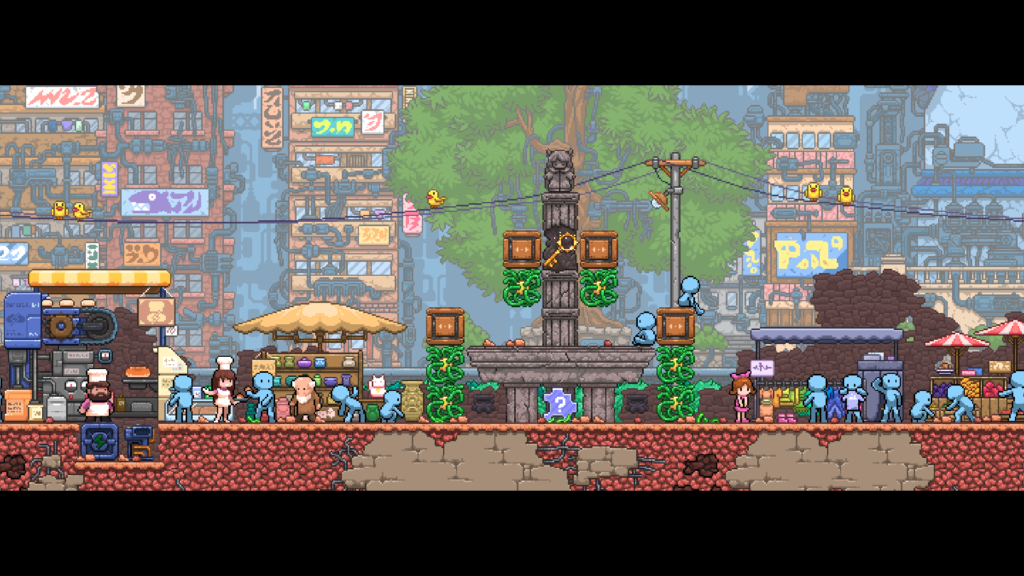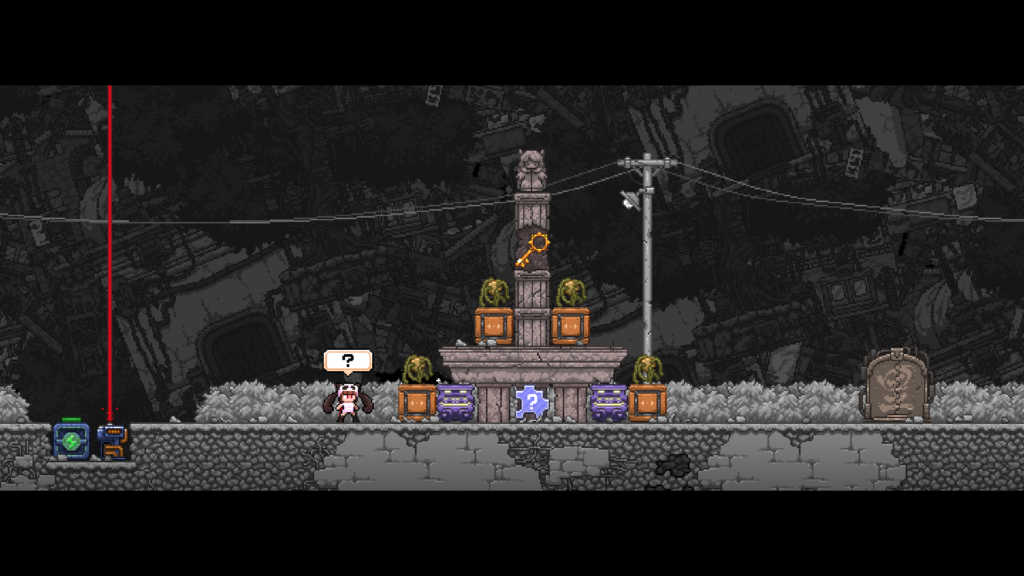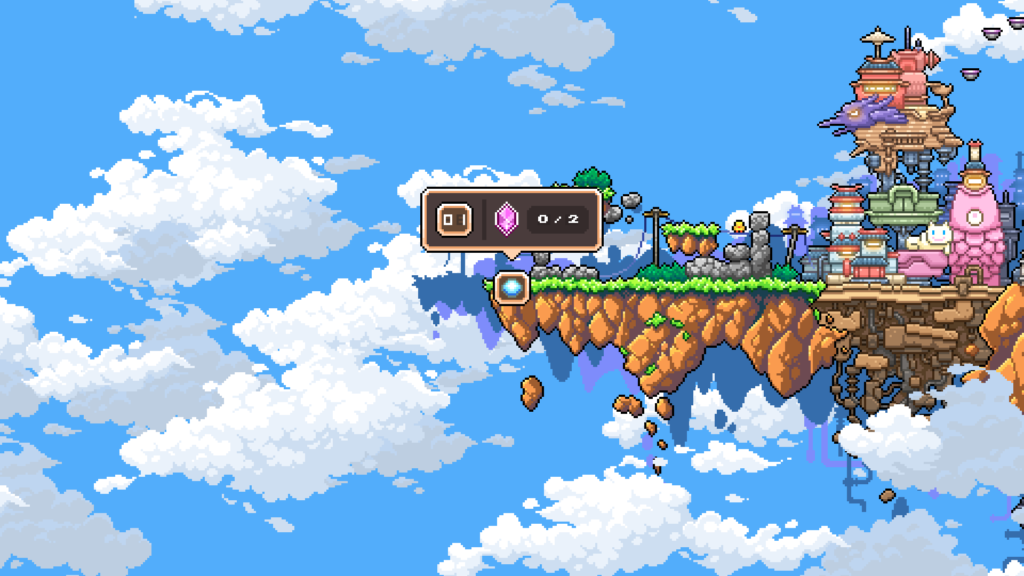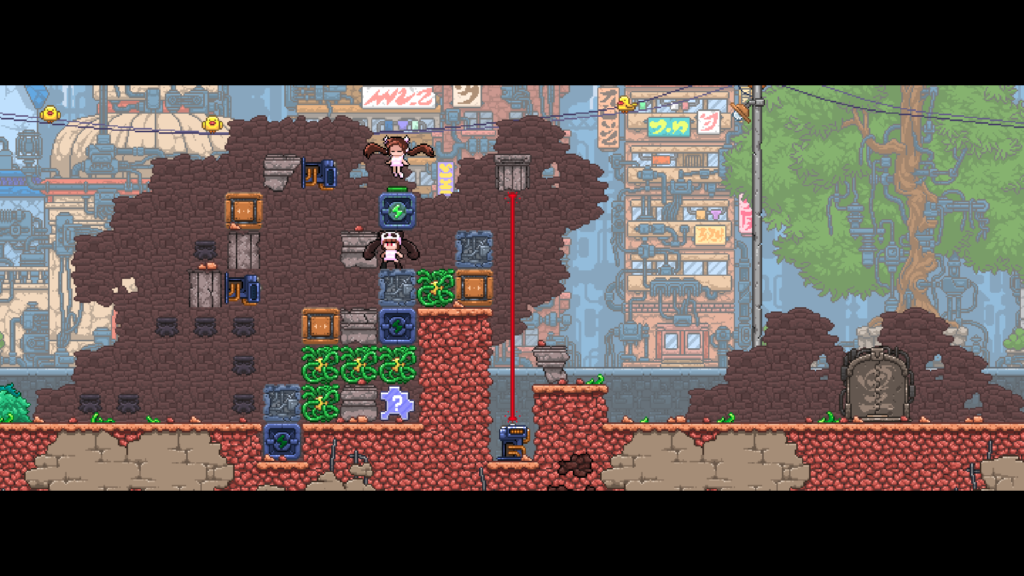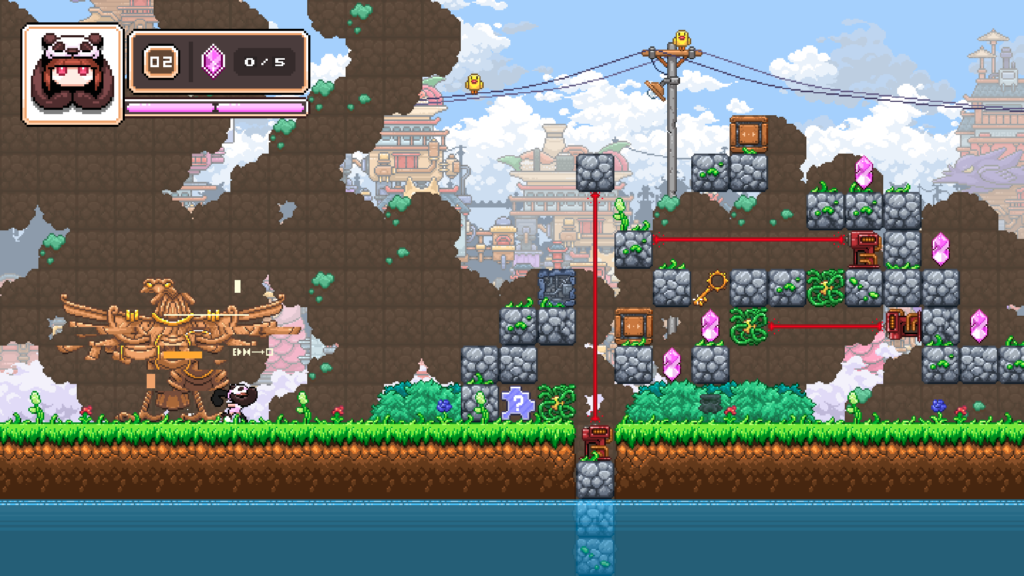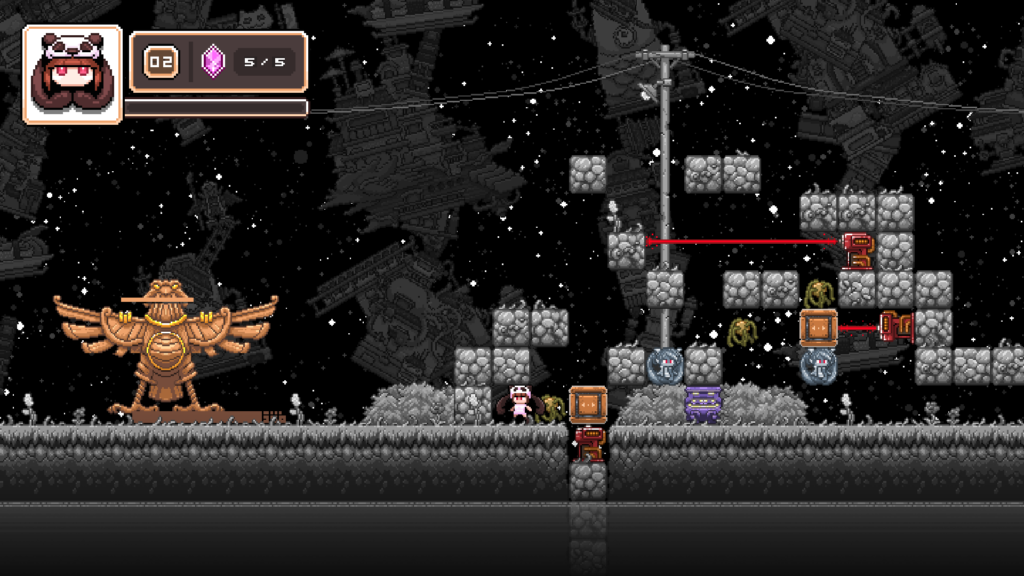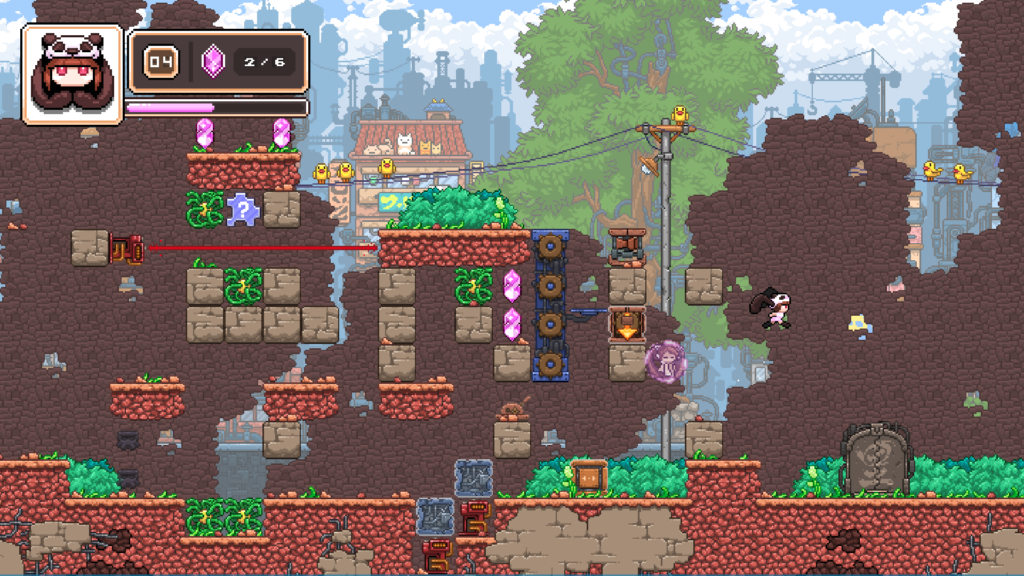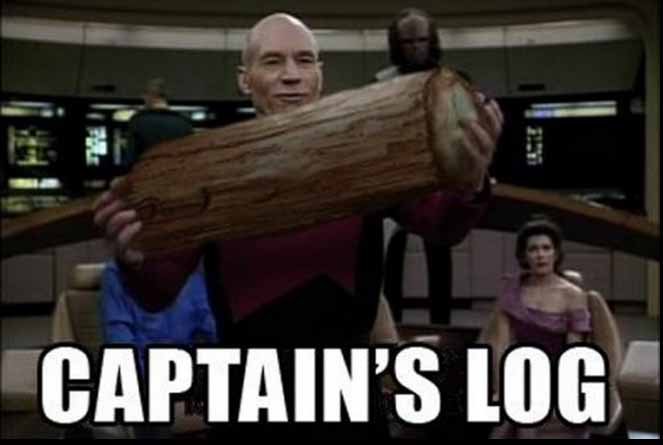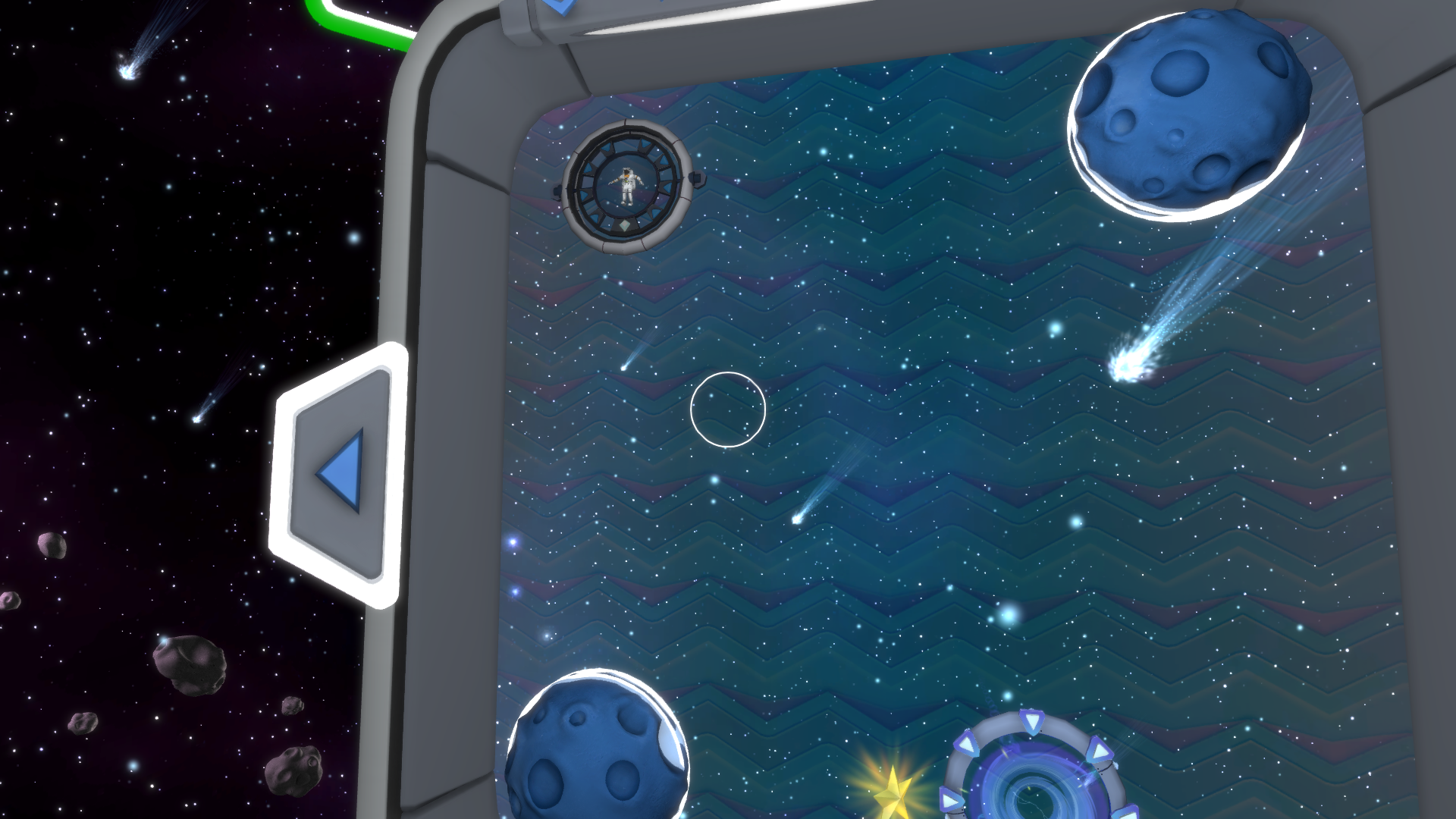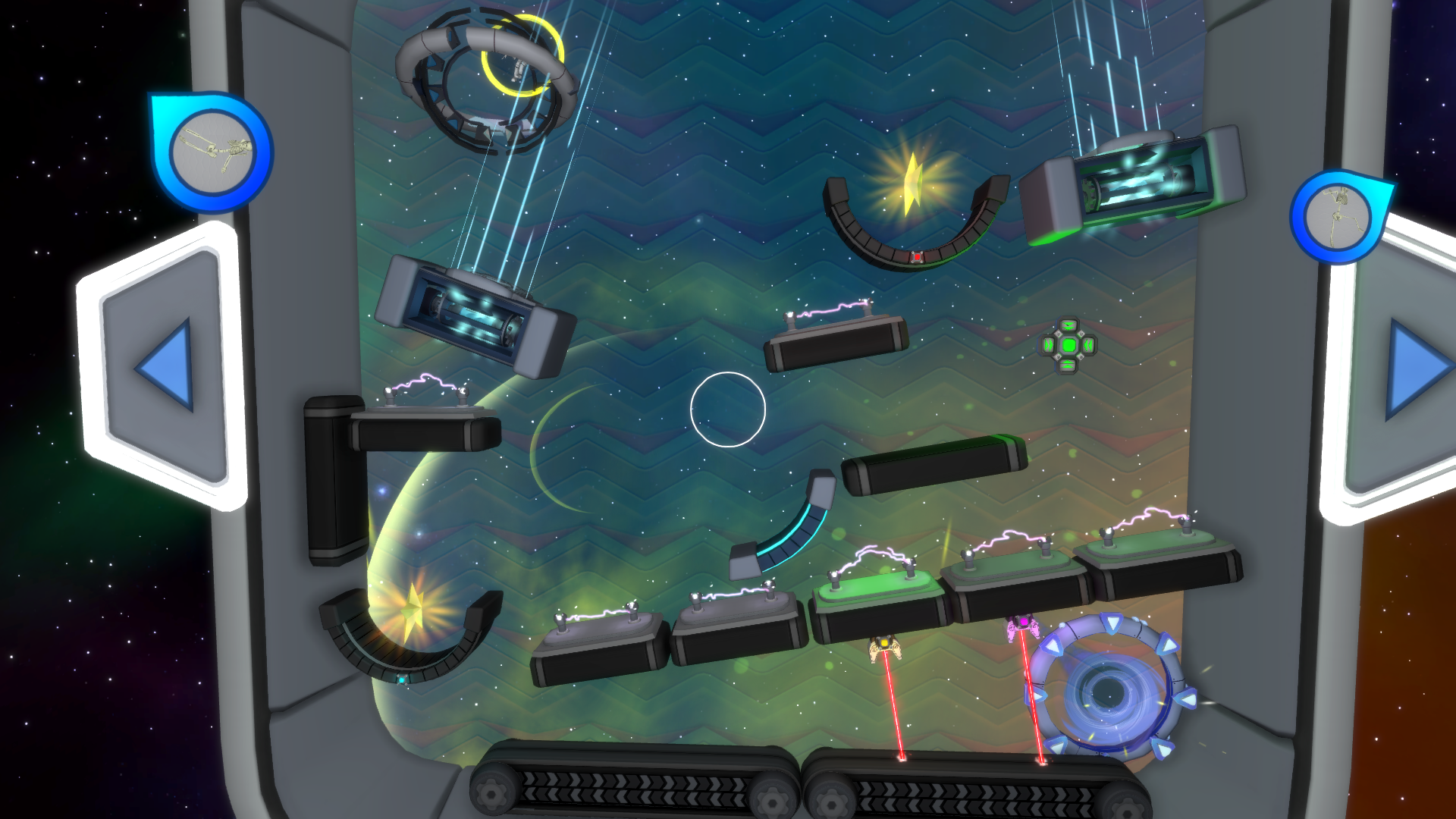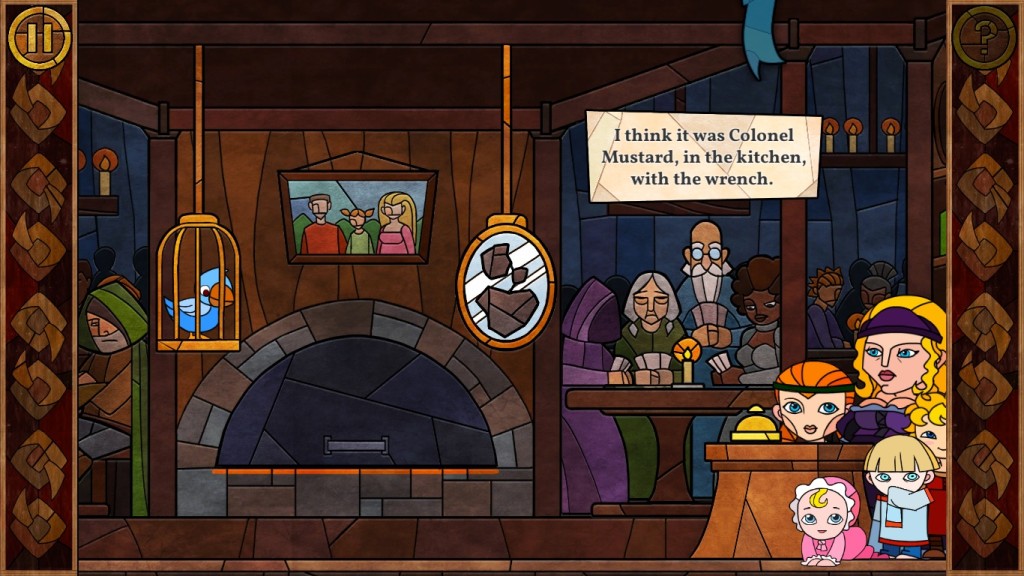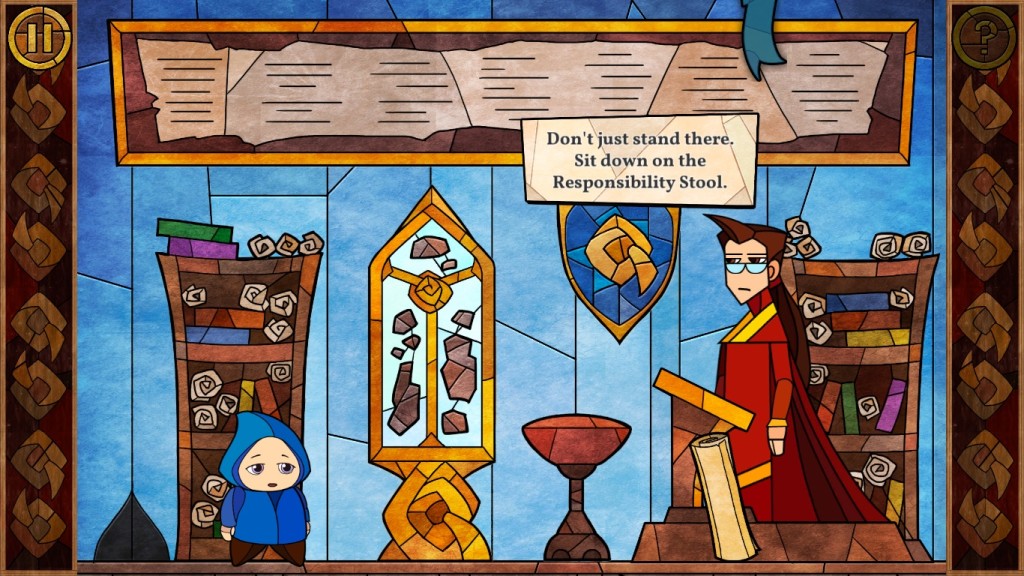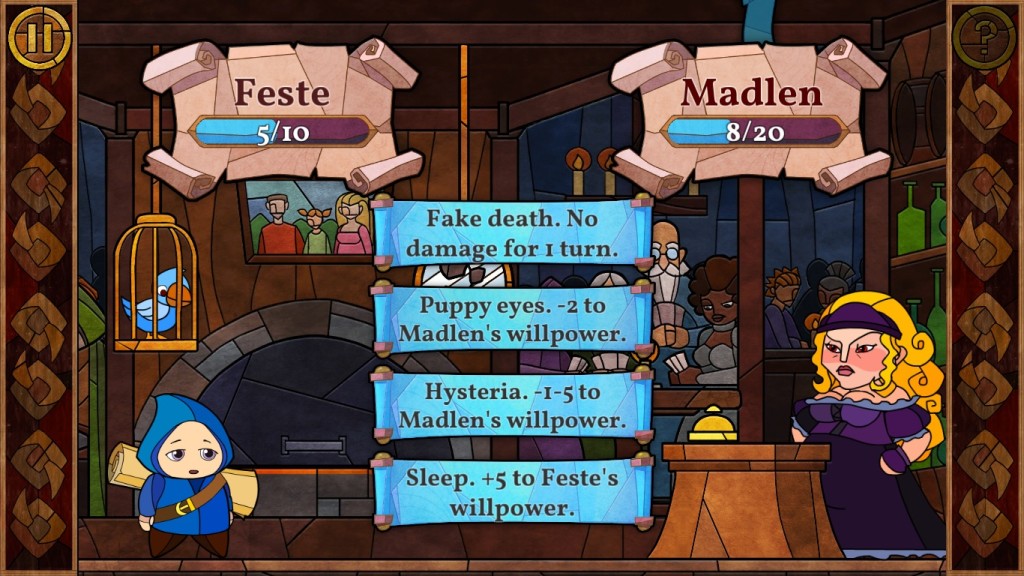Developer/Publisher: Stirfire Studios || Overall: 6.0/10
I met the boss in a dark internet alley. Real cloak and dagger stuff. He slips me a message shortly before he passes along a key. I was tasked with an important mission: review Symphony of the Machine.
My qualifications, you ask? I’m the only one with a VR headset.
Symphony of the Machine is a puzzle game that is something of an atmospheric experience. You start out as a druid of some sort, struggling against a mid-life crisis, waking up after a bender in the desert. Your character comes to, at dusk, precariously close to the fire they had been presumably sleeping next to. At first, you’re unable to do anything, but by picking up a ball on a pedestal and placing it inside of this thingy next to it, the player is able to teleport. It was at this point that the real game began, and I stepped into the projected life I’ve illustrated.
A gold ring appears on the ground, inviting me to teleport to it while my the objects in my hands whine at me to touch them. I touch them, not understanding how to satisfy them. As I look at the mural on the rock near me, I decide to figure out what the deal is with my hands. I rotate in place with a few taps of the touchpad, but the cries persist. The gold ring remains as I move on without understanding what it was trying to convey in the hopes to shut up my damn hands.
I pass through a small trench and make my way to a modest clearing with a tower. As I approach the tower, it appears that a control panel has had a button removed, with the button clearly visible next to it. I picked it up and placed it where it belonged. There was an up arrow and a down arrow, with the up arrow clearly the one to press in this situation. I did so, was rewarded with a nice song while I slowly raised up the tower.
On my way up the tower, I noticed the land was very barren – a desert-like mountainous area – and there was a very purple beam shooting toward the heavens from the tower I was currently ascending. The elevator reached its destination, I was free to walk around the area within the confines of the tower’s traversable platform. In the middle of this platform was a beam coming out of the floor, shooting right out of an opening at the tower’s apex. I moved to the next gold ring on the ground, just next to the beam, as I noticed a bundt cake-looking terminal with a hand floating above it. I placed my hand near it and clicked the trigger, bringing it to life. What happened next was the most surprising thus far.
This noisy thing sprung to life, bobbing around as it floated around. It moved toward a green glyph before looking back toward me and nodding. Then it moved to a purple one, a yellow one, and finally a blue one, repeating its incessant chirping and nodding, pausing before each glyph. It approached me, a big blue oval now pouring out of its head, a silver pane appearing within. Two graphics appeared near the area that was considered its face: a picture of a pane and a hand, and the beam bouncing off of the pane.
My purpose was to bounce this light, so I did. I shot it into a green glyph, basking in my achievement before the robot came to beep at me some more while the clouds began to blow around in the background. A bunch of transparent, green-edged hexagons popped up, obscuring the purple glyph. The robot’s obviously disapproving looks were tinted blue through the obstacle. “I meant the yellow one, asshole,” I imagined him tooting out as the graphics next to its head changed to show the yellow, eye-shaped glyph. I corrected my transgression, aiming at the yellow glyph by adjusting the pane. The green-edged hexagons vanished, yellow ones appearing in front of the blue glyph; dusk rolled back to reveal the sun and blue skies. The floaty bot happily bleep blooped as it moved over to a green pipe at the edge of the tower’s area.
The robot sucked up a bowl of dirt, doing the equivalent of an aerial saunter as it mosied over in front of me. It hovered expectantly in front of me, beckoning me to grab the grubby bowl, some pictures near its head to reinforce the duty. I attempted to outwit it by inaction. When that didn’t work, I picked up the bowl, the robot instantly spiraling back to its pipe to rummage for other things. I attempted to drop the bowl, but it hovered in place to spite me. The little robot returned with a seed, chirp, beep, whatever. You got the picture by now.
My purpose was now clear: it was my duty to place this seed in the bowl I was given. Such a duty was not wasted on me. I grabbed that seed and placed it into the bowl without so much as looking at the graphics that had appeared by my only friend’s head. It plopped in, the robot now implying that I had to grow it. I had been assigned as this tower’s guardian gardener, as decided by the fates and this little fucking noisy robot.
The robot had now become silent. I decided to lose myself in the plant I was now charged with, and to my surprise it had expressed, in the form of a graphic, that it desired something. I had come from a land where plants desired varying amounts of sun and water, but this plant had other needs: wind. “That’s weird,” I thought, “Not sure why a seedling would want to be blown.” I decided to help this budding plant become an adult, regardless of its strange fetishes.
I adjust the beam back to my original target: that stupid green swoosh that originally wasn’t “okay” to shoot at. I move the beam off the yellow glyph, which causes all these yellow hexagons that appeared in front of the blue one to vanish. I once again direct the beam to the green glyph. Hexagons reappeared where they originally had been the first time around, the wind began to blow as before. I had understood several times over at this point that each active glyph blocks clear access to another.
Something new occurred this time, though. Much like those weird stones in The Fifth Element, the thing I didn’t fully understand in my hand moved, ever so slightly. I had progressed in my career, heights unheard of: I was an accessory in the blowing of a vegetable. I had become a hooker at coma ward.
You wouldn’t believe the fucking nerve of this thing, though! This plant now got thirsty – thirsty, of all things! Now it demanded I make it rain, but not like a hooker at a coma ward. I turned around and the robot surprised the shit out of me. “BOOP BEEP??” it blerped as it passed through my corporeal self, violating the space I considered my own. “NO ONE FUCKING ASKED YOU!” I politely replied.
I moved the metal pane and jumped through the hoop, moving the beam from green to blue. More hexagon trading. Wind to light rain. Sprouting. Finished, right? WRONG. The damn plant had more damn demands! Now it wants clouds. CLOUDS. What backwards ass plant wants some clouds? Shade? I’ll give you some shade.
I move the beam from the blue glyph, dragging the beam over the robot and plant to no avail. After a few minutes of that I decided to do as I was told and shoot the purple glyph, fulfilling the cycle and my role as custodian gardener. I’ve done you proud, father.
The plant had evolved into a healthy bowl of grotesque vegan-food. Atypically “salad” and a far cry from the barren dirt bowl it had previously been. I’ll probably never understand why it desired cloud cover, or why my machine was driven by glyphs I had to shoot beams at, rather than a lever or buttons or something. I do know, though, that my journey had ended. I had saved the day, providing this plant with care that it needed for an unknown – probably inordinate – amount of time. The robot, who had be crowding my every goddamn step, booped at me, expressing its desire to become a receptacle for the plant. I grabbed a metal pane and beat it aside, cursing its ancestors before placing the plant into it’s overtly oval and blue head cavity. It was satisfied, and for some reason wanted me to take the plant back.
I took the plant as it directed me to place my life’s work in the corner, across from the green pipe it constantly plumbed for things to fill my time with. I did so, trying to throw the plant on the ground in protest while it dandily floated in place, hovering in front of the cloudy backdrop. “BLEEP,” the robot interjected, ruining my moment.
The robot had some sort of weird t-shaped part. I picked it up out of its head, thinking it was a reward, but I quickly realized it was another tool to do my fucking job. It was a beam splitter, which, when placed in front of a beam, split it at two 90 degree angles. The robot had fucked off during my examination of the object, but it returned, prodding me with another empty dirt bowl. I raised my hands up. “Look, I know where this is heading,” I said, “I’ve done my thing and I’ve helped you. I know I-”
“BLOOP, BLEEP?”
I let out a long, exasperated groan. I took the stupid fucking bowl out of his head. Oh, you’re getting a seed for me to plant again? How surprising! Bring it here then, you stupid fucker! Here it goes, oh, look – a plant. What’s this floppy one need? Windy and sunny? Sure, why not?! I split the beam, overcoming the simple puzzle and bouncing it around the hexagonal obstacles that appeared. It’s now windy and sunny, the tower’s weather reflecting my changes. The plant grows, not unlike the first one.
Thus far, I had done it four times. Seventeen more times and I will have finished the game, along with this narrative. Just imagine that I copy and pasted a bunch of times and changed some words around.
Now, make no mistake, though; Symphony of the Machine gets slightly harder in difficulty despite the repetition. You are given access to another pane and another t-shaped splitter, along with two things that alter the beam to blue, which is cold, and red, which is hot. Using the hot and cold modifiers makes extra hexagons show up that you have to avoid, but they always appear in the same place. If you set up your light path in just the right way, you can avoid all the hexagons that can appear and just slightly move panes and t-shapes to activate and deactivate glyphs as needed.
Presentation wise, I don’t think there’s much to complain about. The music was fitting. Graphically it was fine, and the weather effects were actually pretty good, but there is a minimal amount of content here with very limited replayability. There are only seven plants in the game, with three stages each. After that, you unlock sandbox mode, where you can use the maximum amount of parts (three each, and one of the fire and ice modifiers) and solve all the plants you’ve already completed with no variation in difficulty. This is problematic, considering the high bar to play this game on PC and the distinct lack of replayability for a $20 game.
I think adjustments could be made. Considering all variation is tied to what glyphs are required for the puzzle and where hexagons show up, I figure a randomized mode could really make things difficult, or at least just more puzzles. The included content isn’t even difficult, so the trip is abnormally short. The only thing I didn’t accomplish in about 30 minutes of play time was experience every type of weather, at least according to the achievements.
Now, I’m not saying no one would enjoy a sort of causal laser puzzle game, but there’s already competition in this genre in VR, and I’m not sure if what Symphony of the Machine offers is more deserving of your time than those similar games considering its shortcomings.

